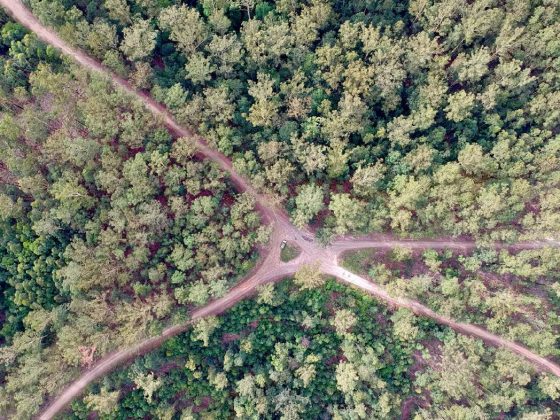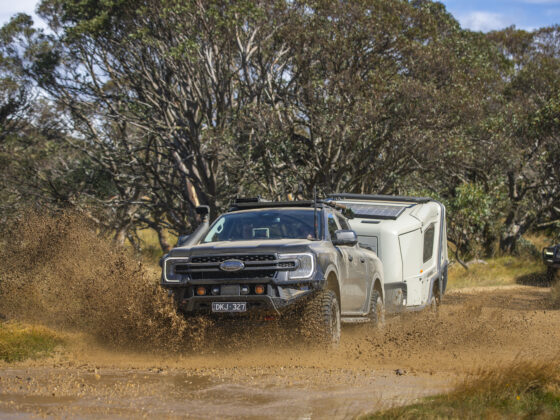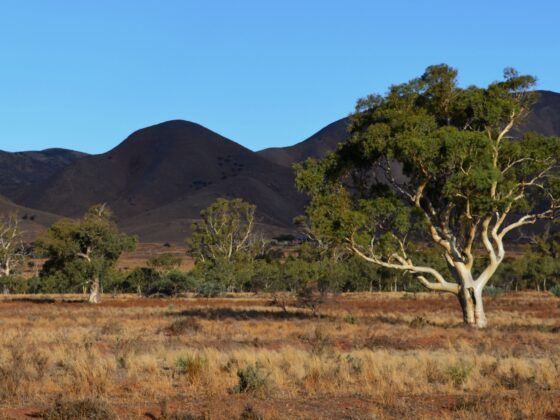
Words & Pics by Pat Callinan & Sea Dream Charters Crew
If one of your mates bought a yacht from New Zealand, and needed a hand sailing her back to Oz, would you go? My answer, was: “When do we leave?”
I’ve always been interested in yachts, particularly catamarans. To me, they seem like the 4X4 of the sea. Self-sufficient electrical systems, diesel engines (for when the wind ain’t blowin’) and plenty of storage for long journeys. Yet while I’ve done the odd charter in protected waters, I’ve never attempted an ocean crossing.
So when good mate Grant Elliot handed in his resignation at Club 4X4, and said he was buying a yacht, I was all ears. More than that, I became his overly supportive best friend, calling at odd hours and assuring him that I was only too keen to assist in his noble endeavours. After shopping for some months, he settled on a 50ft Leopard catamaran from New Zealand. His plan was to bring it back to Australia and charter it out at Airlie Beach in the Whitsundays. He went straight for the top shelf – four cabins, ducted aircon, generator, upgraded engines – the works. You could buy four or five three-bedders in Ipswich for what he paid for his floating hotel. Her name? Aqua Fox.
To assist Grant in bringing Aqua Fox into Australian waters, he enlisted the help of a few mates. There was Matt, an experienced sailor with an impressive resume, including numerous Sydney to Hobart successes. There was Thomas, who was the MacGyver of the crew, able to fix anything and everything. Matt’s 19-year-old son Ethan also braved the journey. And of course yours truly, there to see if seasickness was real or imagined.
The scene was set for a dreamy sail back to Australia, with a calm weather window chosen with favourable winds. It was to be champagne sailing. Well, that was the plan, anyway.
Upon arrival in New Zealand and the beautiful seaside village of Marsden Cove, we received some bad news. The vessel, which had been purchased some months prior, was still technically under a U.S. flag. The U.S. Coastguard had been a little slack and hadn’t worried about transferring the vessel registration to Australia. This meant that New Zealand wouldn’t let us leave, and Australia wouldn’t let us in! Maybe Christmas Island would have us…
So there we were sitting in New Zealand, with the boat in the marina, slowly watching our perfect weather window slip away. Day one, day two, day three, day four…. Despite loads of emails to the authorities, it was a tedious process. Until on Day 5, the approvals were in place. We could leave New Zealand, and sail into ever more precarious seas. The weather window was shifting by the hour, as we watched front after front dance their way around the southern ocean.
On a good day, this sail could be done in four to five days. So we headed out and were greeted with calm seas and stunning coastline. This lasted for around six hours. And then, as we rounded the northern tip of the North Island, the swell kicked in. The Leopard handled it all exceptionally well, soaking up the bumps and taking it all in her stride. It began as a two-metre swell, but the winds were not conducive to good sailing. We had to regularly supplement sail power with engine power, burning far more diesel than we’d have liked. But with a couple of 700-litre tanks, and a burn rate of around 1.5 litres per hour, the little Yanmars were pretty damn efficient. Though sometimes, if the currents and winds were going the wrong way, the speed got down to 1.5 knots. I could have walked faster.

As the second day broke, a massive storm was headed our way, so we had to change course and sail back towards New Zealand. Yes, backwards, though this time down her west coast. It was a mind game, particularly for a four-wheel driver who likes to get places. I soon realised that patience and tolerance are something sailors must have in droves.
We avoided that storm front, but more kept coming, and Matt and Grant were continually on the Starlink looking at the weather for a better route. We had initially wanted to head via Norfolk Island, but the weather forced us on a different route completely.
The seas continued to rise now, but with no option to turn around, we rode into the muck. Five-metre seas greeted us for 48 hours straight, as Aqua Fox was battered relentlessly. Ropes broke, pulleys shattered, and waves crashed almost continuously over the bows. But the worst time was at night. In heavy seas, waves enter between the hulls, and have nowhere to go. This sensation is called ‘slamming’. I had read about this but had never experienced it.
At three o’clock in the morning though, when you hear a bang that’s louder than a 50-cal gunshot followed by a thump on your mattress, it wakes you up. But more than that, it petrifies you. Sure, you understand what it is, but it feels like the boat is fighting with the sea. Surely the boat could fatigue and get stress fractures? This is far worse than any 4X4 punishment I’ve sustained. But sustain she did, shaking off slam after slam, day after day.
On day six we limped into Lord Howe Island, and boy was it a welcome and spectacular sight. The sheer mountains and cliffs rise out of nowhere, to create a beautiful sight. We filled up a few jerries of diesel here, and grabbed some more groceries, given our trip was longer than expected. It had taken us twice as long to get here, and here wasn’t even on our original course.
We sheltered at Lord Howe Island for a few days, enjoying their beaches, mountains and reefs. You can swim straight off the beach, and experience Australia’s southernmost reef systems. If you ever get the chance to visit – go for it.

Matt and Grant spied an ‘okay’ weather window, so we upped anchor at 2 am in the morning and set off towards Australia. The seas were bad again, and speeds were slow, but we had no choice but to plod on. To spice up the trip, we did manage to catch the odd bit of Skipjack Tuna along the way and knocked up a little sashimi. We also had some lovely wildlife encounters, seeing pods of Orca, Humpbacks and loads of sea birds including the mighty Albatross. These birds would join us for days on end. Cooking was also a highlight, as the full kitchen aboard including a bread maker, oven, and microwave enabled us to eat like kings.

With contradictory currents and landfall so far away, the Great Southern Ocean is no playground. Cold water swells push up from the south, and collide with the East Australian Current, which runs to the south. This creates a lumpy, confused sea, that seemingly goes on forever. Our sails alone were often lucky to get us a couple of knots of speed, so had to regularly be supplemented by diesel power. There were a few exceptions of course. One night, Grant and I were on watch, and the wind swung, caught the sales at just the right angle, and off we rocketed. We were flying! 17.8 knots was the readout, and believe me, at night on a rough sea, that felt like about 280km/h on the Finke Desert Race track.

Just a day and a half out, we lost an engine. Despite putting a biocide in the tank, an algal bloom had formed, blocking the filters and starving the engine. Matt and Tom spent six hours cleaning, flushing and replacing filters, before getting her going again. All this was happening in 4-5 metre seas.
And then, just a few hours out of the Gold Coast, the seas calmed, the wind kicked in, and we had a perfect sail into the Gold Coast Seaway. What could have taken four days, took 12. It was an adventure. Do I regret it? Hell no. But boy, I’d love to try it again in calm seas.

By the time you read this, Aqua Fox will have made her way up to the calm and sheltered waters of the Whitsundays. I’ve sailed a little around there and can say that it’s an experience you will never forget.
I told Captain Grant that you mob were adventurous types, so he agreed to give MR4X4 readers a special discount. So if you type in the code Mr4x4, you’ll get 15% off the advertised daily rate.
You can book here: https://seadreamcharters.com.au/
Read more: 5 Must have 4×4 accessories










